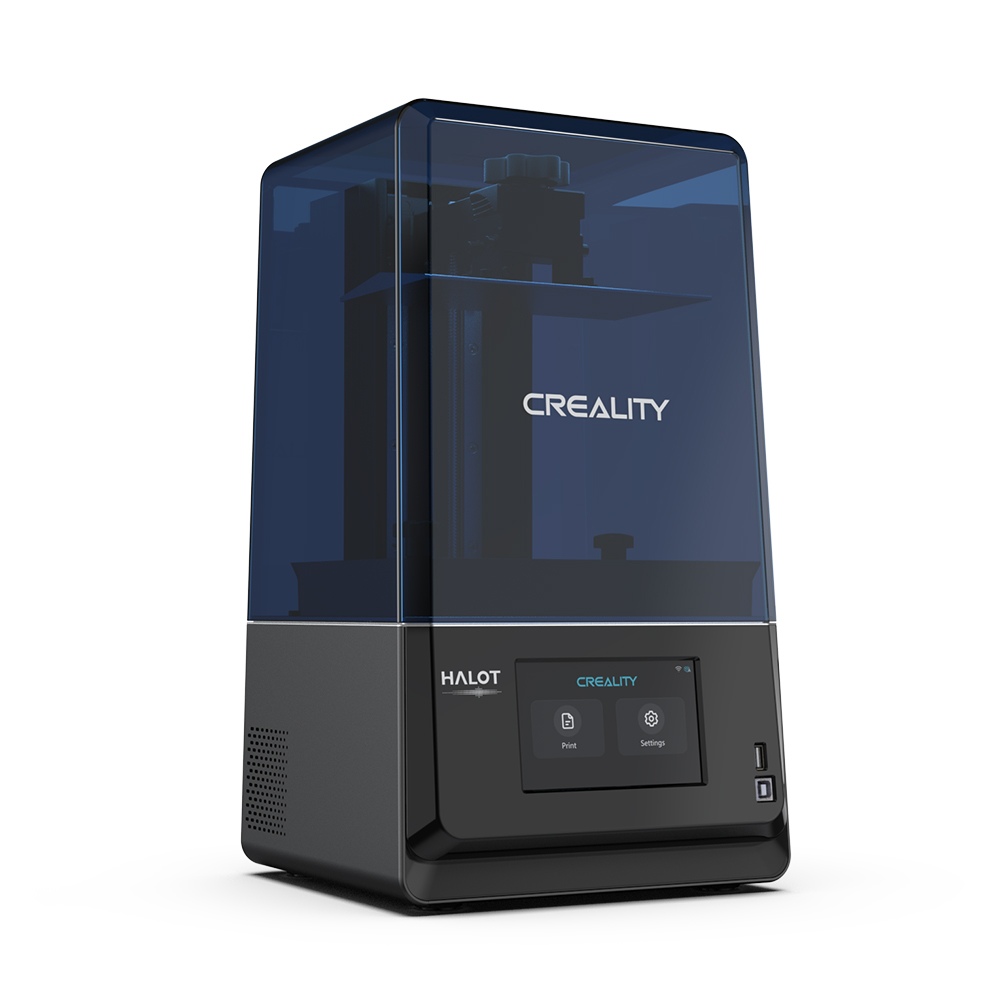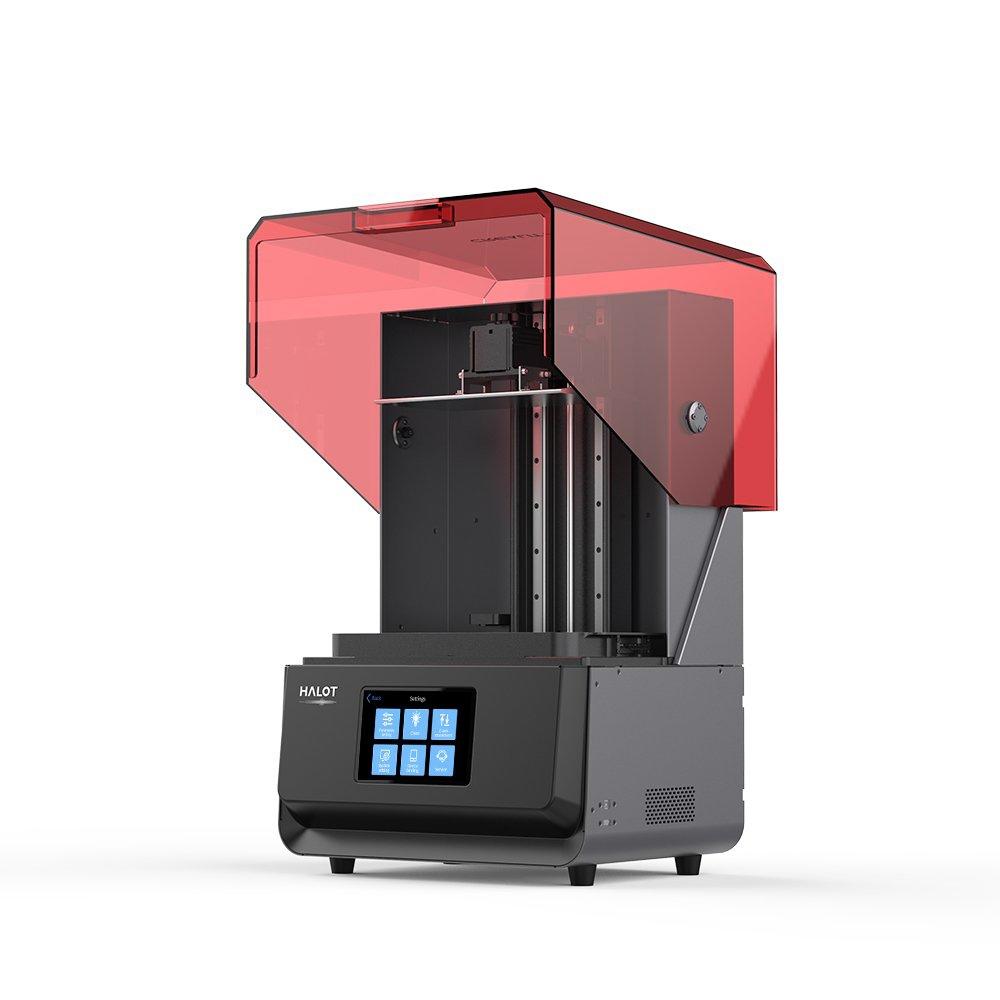Compare Halot One Plus vs Halot Max
Comparison between the best 3D printers
Choose the best 3D printer at the best price. The cheapest 3D printers are here.
Buy a 3D printer here with 3D Fila.
 |
 |
|
| Model | Halot One Plus[BUY Halot One Plus] |
Halot Max[BUY Halot Max] |
| Printing Material | Resin | Resin |
| Buy Resin for Creality 3D Halot One Plus | Buy Resin forCreality 3D Halot Max | |
| Estimated price | $399,00 | $3000,00 |
| Manufacturer | Creality 3D | Creality 3D |
| Release Year | 2022 | 2021 |
| Print Volume [mm] | 102x172x160 | 293x165x300 |
| Printer Size [mm] | 236x245x416 | 480x387x770 |
| Weight [kg] | 6,8 | 32,5 |
| Power Loss Recovery | NO | NO |
| Technology | LCD | LCD |
| Screen Resolution | 4k | |
| Max Print Speed [s/layer] | 1 | 1 |
| Maximum Resolution [mm] | 0,03 | |
| Processor | ||
| Display | Display touchscreen 5'' | |
| Power Supply | ||
| Connectivity | USB / Wi-Fi | SD / USB / Wi-Fi |
| Operating systems | Windows, Mac, Linux | |
| Date of registration in the system | 2022-10-11 | 2022-11-04 |
| Release date | 2022 | 2021 |
| Extra features | Crealitys Halot-One Plus printer stands out for its 4K+ resolution that delivers sharp details and consistent surfaces. It features a fast and responsive 5-inch LCD interface, as well as easy-to-use Halot Box software. It offers Wi-Fi connectivity and remote print monitoring, as well as an integrated air filtration unit, a rare feature in this price range. The Halot-One Plus is designed for the prosumer market, combining high quality with advanced features such as Wi-Fi and air filtration. During testing, it stood out for implementing these features at an affordable cost, while maintaining functionality. It features an attractive design with a UV-resistant blue cover and a robust dual rail system for the Z-axis, ensuring smooth and consistent movements. The large LCD and high resolution of the LCD mask (4320 x 2560) are other strong points, allowing for fine details and textures in prints. | The Halot Max printer stands out for its large print size (293 x 165 x 300 mm) and uses SLA technology. It has an integral light source for improved accuracy and a strong core with an advanced operating system. Its Z-axis module ensures high precision, supported by efficient slicing software. The machine offers online OTA updates and boasts an adjustable layer thickness between 10 and 200 microns. Its XY-axis resolution is 3840*2160, with 0.05 mm accuracy, and an integral 405nm light source. The printer includes a 5" touchscreen and multiple connectivity options, such as USB, Creality Cloud, and HALOT BOX WiFi. With cutting-edge technology, the Halot Max is ideal for printing small models with uniform precision, thanks to its self-developed lighting system and stable printing mechanism, which includes dual linear guides, ball screws, and an intelligent brake system. |
| Support for multiple colors and materials (AMS and CFS) | NO | NO |
Notes * |
||
| Cost-benefit | 8 / 10 | 5 / 10 |
| Hardware | 1.2 / 10 | 1 / 10 |
| Tela | . | . |
| Print volume | 3 / 10 | 3 / 10 |
| Performance | 9 / 10 | 9 / 10 |
| [BUY Halot One Plus] | [BUY Halot Max] |
Conclusion |
| In comparing the Creality 3D Halot One Plus and the Halot Max 3D printers, several key factors emerge that can help potential buyers make an informed decision. The Halot One Plus offers an impressive combination of features at a significantly lower price point, making it an attractive option for those looking for quality prints without a hefty investment. The 4K+ resolution and user-friendly touchscreen interface enhance the overall printing experience, while its compact design and lighter weight provide additional convenience and accessibility for home users and prosumers. Its additional features, such as Wi-Fi connectivity and integrated air filtration, add value, particularly in this price range, making it a strong contender for those who prioritize both performance and affordability. On the other hand, the Halot Max is geared toward users who require a larger print volume and more advanced technical features. It supports high precision and printing accuracy with its SLA technology and advanced operating system, making it suitable for detailed models that demand consistent quality. The Halot Max does come at a much higher price point and heavier build, which may deter casual users but could be justified for professionals or serious hobbyists needing robust capabilities. Ultimately, the choice between the two models depends largely on the user's specific needs and budget. For those entering the world of 3D printing or requiring reliable, high-quality prints without breaking the bank, the Halot One Plus presents an excellent option. Conversely, for users needing advanced technology and larger printing capabilities for intricate projects, the Halot Max may warrant the investment despite its higher cost and size. |

